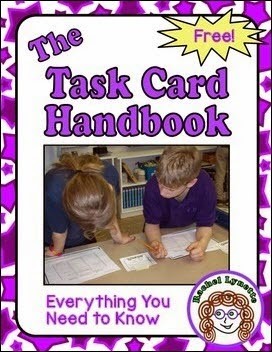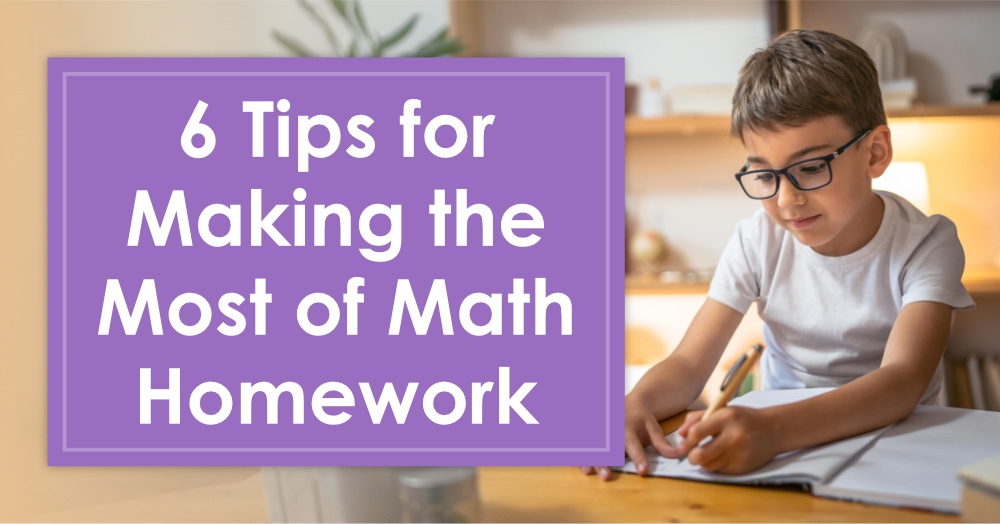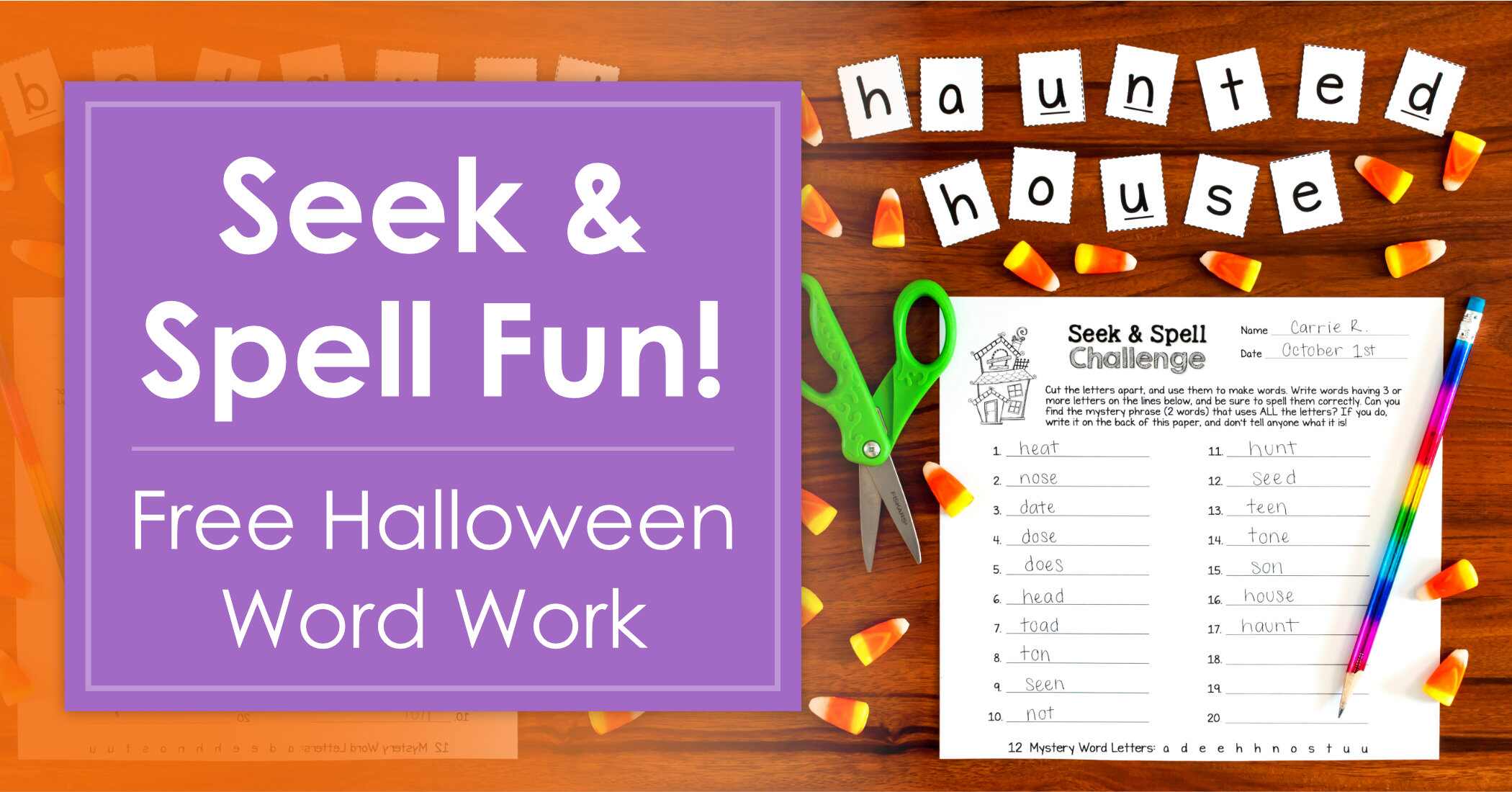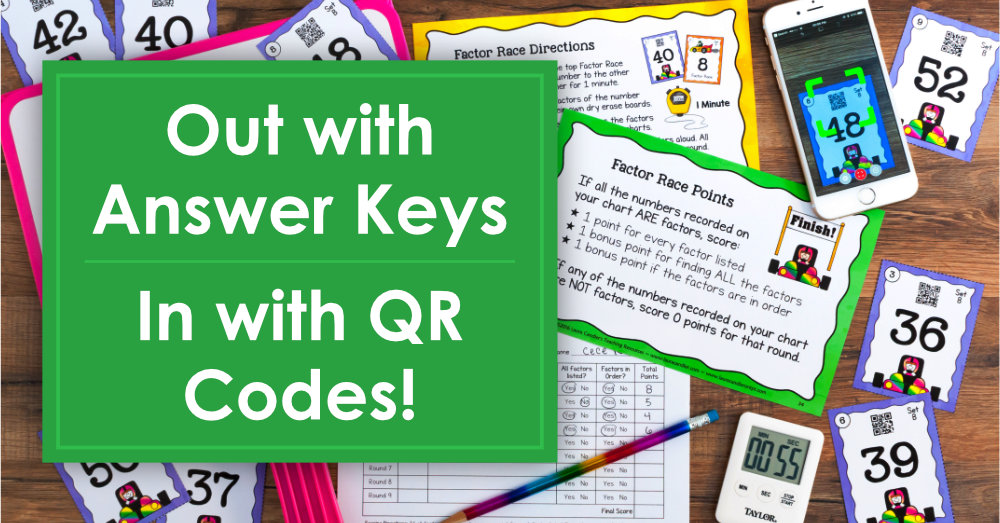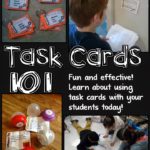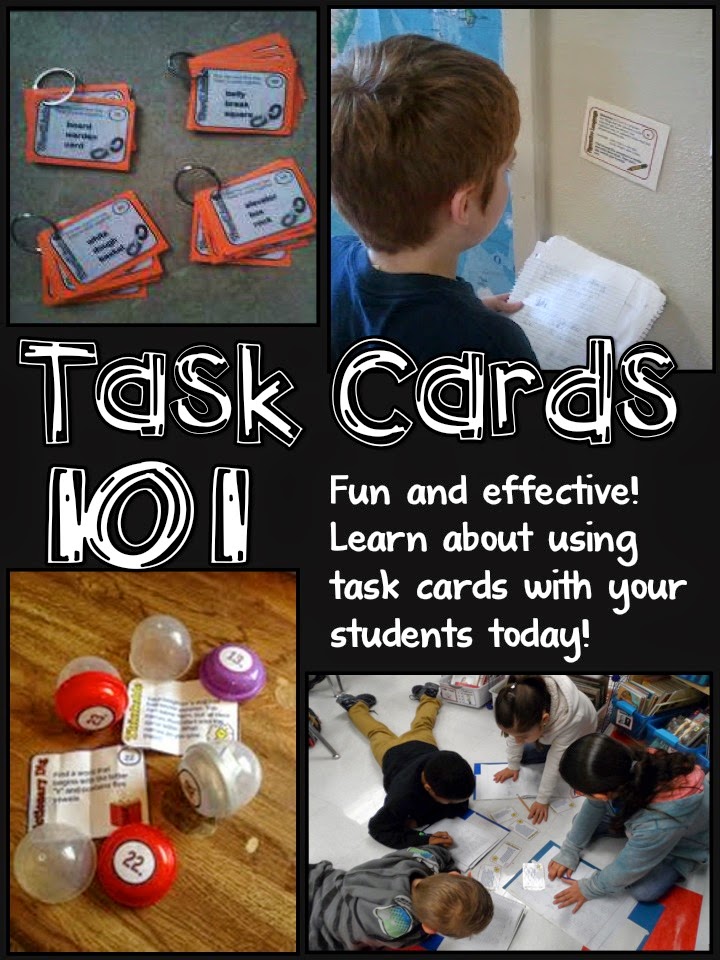 Today I’m trading blogs with Rachel Lynette of Minds in Bloom. I wrote a blog post for her on Cooperative Math Problem Solving, and she wrote this one for me! She’s the task card queen, so I asked her to share some tips for using task cards effectively. You’ll love these strategies!
Today I’m trading blogs with Rachel Lynette of Minds in Bloom. I wrote a blog post for her on Cooperative Math Problem Solving, and she wrote this one for me! She’s the task card queen, so I asked her to share some tips for using task cards effectively. You’ll love these strategies!
Have you been hearing a lot about task cards lately, but are unsure about how to utilize them in your classroom? Well, then I have some good news for you! First, it is easier than you might think, and second, once you start using them, you and your students will be hooked!
A task card is exactly what it sounds like: a card with a task on it. Task cards come in sets so that you can target a specific skill, standard, or subject area. One way to think of task cards is as an alternative to worksheets. Student rarely get excited about worksheets, but they love task cards! The one-task-per-card format keeps students from being overwhelmed and allows them to feel a small sense of accomplishment as they complete each card.
Bright, colorful, and laminated, they are appealing both visually and tactilely. Further, they save paper, big time! Copy and laminate once, use for years. Students answer on a single answer sheet, notebook paper, or even individual white boards.
Here is a free set of Antonym Task Cards so you can see for yourself. This is a set for Grades 4 -6, and if you need something easier, you can download the free set for Grades 2 and 3.
How to Use Task Cards
So, now that you know how awesome task cards can be, how can you use them with your students? That is where the fun begins. Task cards are much more versatile than worksheets and can be used in a variety of ways. Here are three options:
- Learning Centers – One of the most popular ways to use task cards is at centers. Students can use sets individually or in groups by passing the cards around. You may also want to have students work in partners with one partner checking the other partner’s answer. If you provide an answer key, students can self-check their work. Another option is to write the answer directly on the back of each card.
- Independent Work – Students could also work individually by taking a set of card to their desks, or even home as homework. This can be an ideal option for your high-end students who might need a little extra challenge as well as for your struggling students who need more practice with a given skill. Task cards make differentiation easy because you can decide which set is appropriate for each of your students.
- Whole Class – Another way to use task cards is with your entire class. You could display cards one at a time on the document camera and have students answer on white boards. Have students hold up their boards so that you can scan the room to be sure everyone is answering correctly. You could also put one card on each student’s desk and have students rotate with clipboards, completing each task as they move around the room (one version of this is the game Scoot). Allowing students to randomly select a card to complete is a great way to use cards that have longer tasks – such as writing prompts.
Want to learn more about using task cards? Please download my free Task Card Handbook. It has everything you need to know in one handy resource!
Ready to try using them in your classroom? You can download a variety of free task cards sets from my Totally Task Cards blog free resources page.
What is your favorite way to use task cards? Please share with a comment.
Rachel Lynette is the author of the Minds in Bloom blog as well as over 100 nonfiction books for children of all ages. You can find more task cards as well as many other highly rated teaching materials on her blog.


